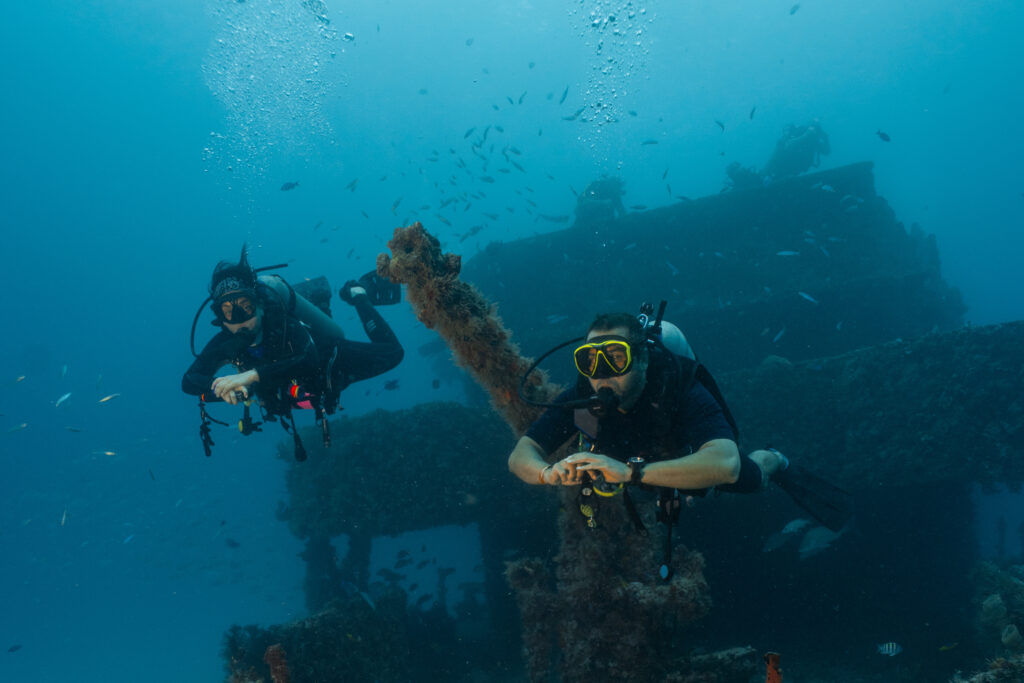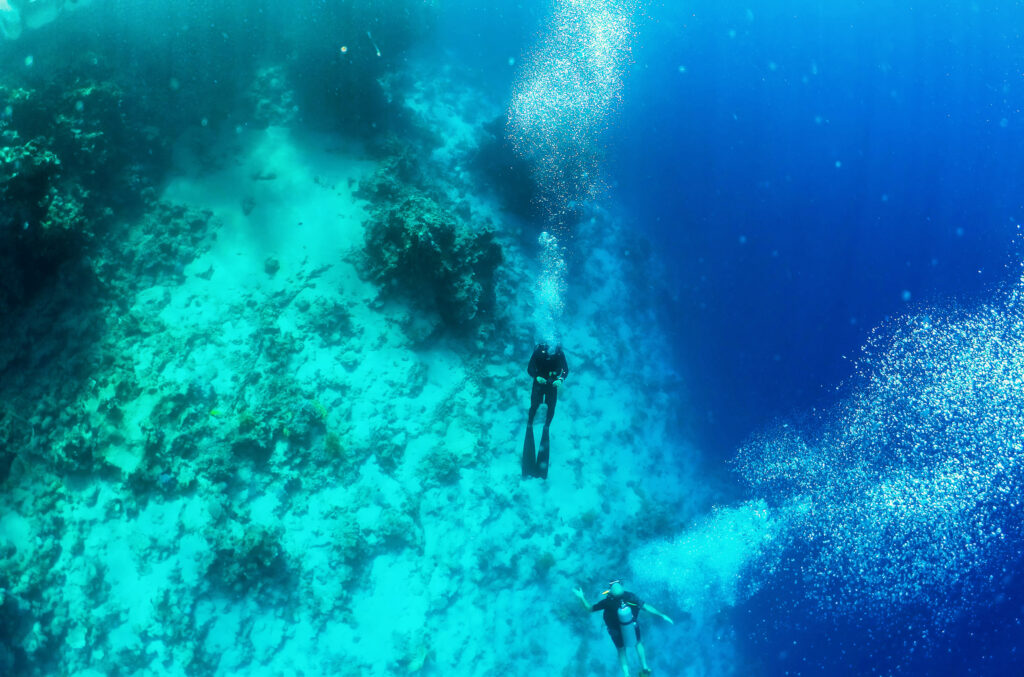What is a Deco Mix?

Decompression mix, or deco mix, is a specialized gas mixture used in scuba diving to facilitate safer and more efficient decompression during ascent. Decompression is a critical phase in diving where accumulated inert gases, primarily nitrogen, are safely expelled from a diver’s body to avoid decompression sickness (DCS). Deco mixes are tailored to optimize the elimination of these gases, particularly during deep or prolonged dives where standard air might not suffice. Understanding and correctly using deco mixes can significantly enhance a diver’s safety, reducing the risk of DCS and other diving-related ailments.
What is Heliox?

Heliox is a breathing gas mixture composed of helium and oxygen, widely used in deep-sea diving due to its unique properties that improve safety and performance under extreme conditions. Unlike standard air, which consists of approximately 78% nitrogen and 21% oxygen, Heliox replaces the nitrogen with helium. This substitution is crucial in mitigating the adverse effects of nitrogen narcosis and oxygen toxicity that divers can experience at greater depths. Heliox has been a game-changer for technical and commercial divers, enabling them to work and explore at depths that would otherwise be highly hazardous.
What is Gas Blending?

Gas blending, a crucial process in scuba diving, involves mixing various gases to create a breathable mixture suitable for different diving conditions. This practice is essential for ensuring diver safety and enhancing dive performance, particularly in deeper or more prolonged underwater explorations. By carefully blending gases, divers can mitigate the risks associated with breathing high-pressure oxygen and nitrogen, such as oxygen toxicity and nitrogen narcosis. Gas blending has become a fundamental aspect of modern scuba diving, enabling divers to explore the underwater world more safely and efficiently.
What is Oxygen?

Oxygen is a fundamental element essential for the survival of almost all living organisms. In the context of scuba diving, understanding oxygen’s properties and its role is crucial for both safety and performance. This article delves into the various aspects of oxygen, from its basic chemistry to its physiological effects on divers, and the technologies used to manage it underwater. As one of the critical components in breathing gas mixtures, oxygen’s management and the equipment designed for its delivery are vital for successful and safe scuba diving experiences.
What is Rapture of the Deep?

Rapture of the Deep, commonly known as nitrogen narcosis, is a condition experienced by scuba divers at significant depths. This phenomenon, resulting from the increased partial pressure of nitrogen when diving, can lead to a range of symptoms that affect cognitive and motor functions. Understanding Rapture of the Deep is crucial for divers to ensure safe practices and avoid potentially hazardous situations underwater.
What is Partial Pressure?

Partial pressure is a fundamental concept in physics and chemistry, particularly significant in the context of scuba diving. It refers to the pressure exerted by a single type of gas in a mixture of gases. Understanding partial pressure is crucial for divers as it influences how gases are absorbed, transported, and expelled in the human body under varying underwater conditions. This concept helps in comprehending how different gases behave under increased pressures encountered at depth and is essential for ensuring safety and preventing diving-related illnesses.
What is a Wet Pot?

A Wet Pot is a specialized water-filled hyperbaric chamber used predominantly in experimental work, training, and as a transfer chamber in saturation diving systems. These chambers play a crucial role in the field of hyperbaric operations and scuba diving by providing a controlled environment for divers and researchers. In training scenarios, Wet Pots simulate underwater conditions, allowing divers to practice and prepare for real-life situations. In experimental contexts, they enable scientists to conduct research on the effects of pressure and gases on the human body and various materials. Furthermore, Wet Pots serve as transfer chambers in saturation systems, where they facilitate the safe removal and handling of wet equipment after deep dives. Their versatility and utility make Wet Pots an essential component of modern diving and hyperbaric practices.
What is Trimix?

Trimix is a specialized breathing gas mixture used by technical divers to safely reach greater depths than what is achievable with air or nitrox. Comprising oxygen, nitrogen, and helium, trimix helps mitigate the risks associated with deep diving, such as nitrogen narcosis and oxygen toxicity. By reducing the proportion of nitrogen and oxygen in the breathing mix, trimix allows divers to explore depths well beyond recreational limits while maintaining a safer physiological profile.
What is Saturation?

Saturation, in the context of scuba diving, refers to the state where body tissues have absorbed the maximum amount of inert gas they can hold at a given pressure. This concept is crucial for divers, especially those engaging in deep or prolonged dives. Understanding saturation helps divers manage their exposure to high-pressure environments and ensures they follow appropriate decompression protocols to avoid decompression sickness (DCS). This article delves into the basic principles of saturation, the specifics of saturation diving, its physiological implications, decompression strategies, technological aspects, and safety protocols.
What is Surface Consumption Rate?

The Surface Consumption Rate (SCR) is a critical concept in scuba diving that quantifies a diver’s gas usage under standardized surface conditions. This value is measured in units such as pounds per square inch (psi), bars, or cubic feet per minute (CFM). SCR is an essential metric for calculating a diver’s air consumption at different depths and plays a significant role in dive planning. Having an accurate understanding of one’s SCR is key for determining the duration of a dive, ensuring a safe and well-managed air supply throughout the dive.
